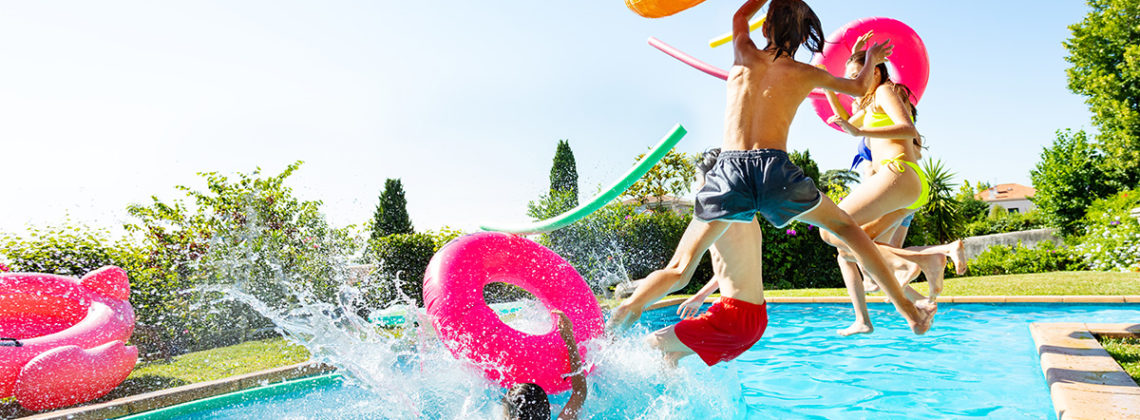
Maintaining a swimming pool is more complicated than many of us imagine, but the rewards are clear. Four components must be constantly nurtured: water chemistry, the pool’s surface, its circulation, and its filtration system. Keep your swimmers (and your investment) healthy this summer with the following pool maintenance tips. It’s the season for a little Pool Envy: How to make your pool the place to be.
Brush
Be sure to brush the walls of your pool to remove particles that adhere to concrete or fiberglass. Brush at least once a week to clean mold and algae from your pool’s walls – and do this before you vacuum. Particles that have sunk to the bottom of your pool can then be easily removed by the vacuum.
Vacuum and Rake
Use a net to scoop out twigs, leaves, and other debris that finds its way to your pool. Experts suggest investing in a scoop with a sturdy yet lightweight design. Choose a scoop with an extra-wide net and a telescopic pole to enable you to reach the middle of your pool. Use a pool vacuum to remove debris such as leaves that have fallen to the bottom of your pool. Vacuum your pool weekly, at a minimum.
Keep the Filter Clean
Clean your filters once a week. Even if you keep your chemicals in perfect balance, a dirty filter will counteract this. A dirty filter can lead to a cloudy or even green pool, due to the lack of water circulation. As water passes through the filter, millions of tiny particles are trapped by the filter. The accumulation of the particles then leads to an overworked and under-performing pump that is not able to properly do its job.
Skimmers and Returns
Skimmers (we’re not referring to net skimmers on a pole) pull water from the pool and send it to the filter for cleaning. The returns then push the cleaned water back out into your pool. It’s important to keep the skimmers and returns clear of debris and/or obstructions.
Check PH Levels on the Regular
Check the pH levels of your pool every day if possible. The pH level measures the acidity of your pool water, and the scale goes from 0 to 14 – 7 being neutral. The ideal pH level for pool water is 7.5. The best time to test the water is in the evening, before adding chemicals, and again first thing in the morning to ensure it is suitable for swimming.
Maintain Water Level
Water levels should be checked weekly when you skim the pool. Your pool will lose water over time due to evaporation. Don’t let the water level fall below the skimmer intake, which may damage the pump. Fill your pool with a garden hose.
Keep a Schedule
Between your family, your neighbors, and Mother Nature- all happily spending time in your pool, it’s important to make a cleaning schedule and stick to it. Better yet, post a schedule of tasks, due dates, and the family member responsible for the task. Just like other ongoing projects, staying on top of the regular maintenance will make any task at hand easier.
